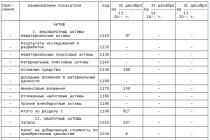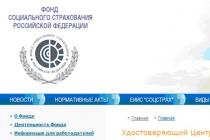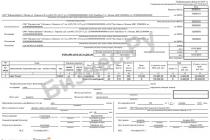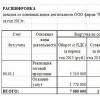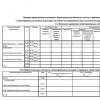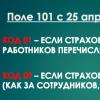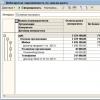The form "Information on the average number of employees" is filled out by the accountant of the enterprise in order to reflect statistical data, as well as to calculate taxes. It is the first report to be filed at the beginning of each new year.
Information on the average number of employees: form, regulatory framework
According to Art. 80 of the Tax Code, this document is drawn up and submitted before January 20. For accountants, a special standard form has been developed, in the columns of which it is required to enter information received during the year.
(a sample filling is offered in the photo below) is calculated even when the enterprise does not use hired labor. 
To eliminate misunderstandings and clarifying questions, the Ministry of Finance published an explanatory letter. The report can be submitted either electronically or in paper form. An accountant working in an enterprise with a staff of up to one hundred people is allowed to choose the type of filing of a document at his discretion. If the number of employees exceeds this threshold, the document should be sent electronically. 
Administrative responsibility
The accountant must carefully read the rules for filling out the form "Information on the average number of employees." The form, the form of which is presented above, is a mandatory report, and its late submission threatens the enterprise with a fine. Despite the small amount of recovery, delay should not be allowed. In the event that the tax service does not receive information about the average number of employees (the form can be seen in the photo above), its employees have the right to recalculate taxes and refuse to provide the company with any benefits. They may require the payment of additional taxes, fines and penalties. At the same time, the accountant will still need to work hard to compile reports on the average number of employees for the year and submit the missing document. Thus, it becomes most rational to bring all the data together and fill out the report in a timely manner.
workers per year?
Various automated systems for personnel accounting make life easier for employees of large enterprises. These programs themselves calculate all the indicators and add them to the reports. 
Accountants of small firms are forced to do this work on their own. The basis for the calculation is the daily accounting of the headcount. These figures must correspond to those given in the timesheets.
Also important is information about who was hired, fired, transferred to another position, sent on vacation or sick leave. All this data is drawn from orders, personal cards of employees, payrolls or from other working documents.
List of categories of employees that must be taken into account when calculating the TSC
In order to receive and transfer reliable information to the tax, the accountant includes the following employees in the calculation:
- People who come to work.
- Those who were absent due to specific circumstances.
- Employees on a business trip (if they continue to receive salaries).
- Sick employees who have sick leaves.
- Employees who were employed in the performance of state or municipal duties.
- Working full and part time.
- Rookies on probation.
A sample of filling out information on the average number of employees (ANC) can significantly speed up the process of compiling a report. The order of Rosstat offers a formula for calculating the desired indicator for the year:
AMS (annual) = AMS (January) + AMS (February) + ... + AMS (December) / 12
In the event that the enterprise has not been operating since January, the total amount of the TSC is still divided by 12.
Monthly indicator
Another counting principle is used to calculate the AMS for one month:
AMS (monthly) = AMS (employees who worked full-time) + AMS (employees who worked part-time).
To find out how many people are busy throughout the day, you should carry out the following calculations:
SCH \u003d SCH (for the first day of the month) + SCH (for the second day) + ... + SCH (for the last day) / 28 (29, 30, 31). Divide by the number of days in a month.
AMS (quarterly) = AMS (first month of the quarter) + AMS (second month) + AMS (third month) / 3
The last indicator (quarterly) may be required by extra-budgetary funds. 
Who is taken into account when calculating the SCH
In order to correctly calculate the indicators, the accountant must use data on employees hired under employment contracts, those who work on a permanent or temporary basis, as well as those hired for seasonal work. Be sure to take into account the people who are in the workplace, and those who are absent. Those who were registered simultaneously on the basis of labor and civil law contracts are considered as one employee.
Weekend avg is calculated from the previous days.
What to do with employees who work part-time?
The sample filling in information about the average number of employees, shown at the beginning of the article, contains only one number (10) in a column with the same name. It takes into account all the workers involved in the labor process at a particular enterprise. If everything is more or less clear with people who work full time, then there may be difficulties with counting employees of another category.
AMS per month (part-time employees) = number of man-hours per month or the length of the working day for this category of workers / number of days worked.
In this case, the usual length of the working day (with a five-day week) will be:
- If worked 36 hours/week - 7.2 hours.
- At 24 hours/week - 4.8 hours.
Part-time is mandatory for persons under 18 years of age, women who are breastfeeding, the disabled, workers in hazardous industries.
In the case when the SCH is a fractional indicator, it is rounded up, following the mathematical rules: if the digit after the decimal point is less than five, it is rounded up to the previous unit, if more - to the next one.
To eliminate mistakes in the future and make it easier for yourself, you should leave the calculations once made and use them as a sample for filling out information about the average number of employees. 
Employees who are not taken into account in the calculation of TSC
There are employees who cannot be included in the staff when compiling an AMS report. Among them:

Let's talk about external and internal part-timers
External part-time workers are those people who are part of the staff of several enterprises. In fact, they are listed as employees of one organization, while in others they can perform any work. At the same time, their working day at other firms will be incomplete (about four hours a day). Their participation in the calculation of the AMS is calculated using the formula (it is given in the next paragraph).
Internal part-time employees are employees of a particular company who perform not only their direct duties, but also additional work. In order to correctly calculate the FSC, the accountant takes into account the number of hours worked by them.
Calculation of the FSS of external part-time workers
The calendar days and the number of employees employed during this period should be summed up. Next, determine the SCH of people who were not at the enterprise on working days. Thus, the total number of employees not fully employed in a given period is obtained.
It will be easier for an accountant to work if he compiles for himself a sample of filling in information about the average number of employees and uses it as a template.



